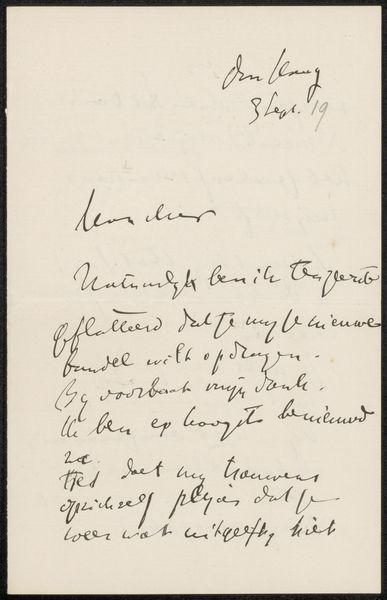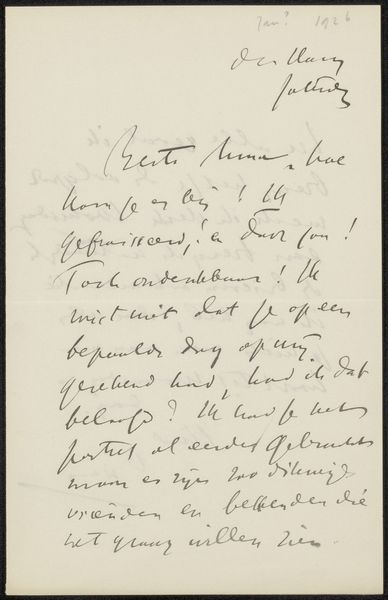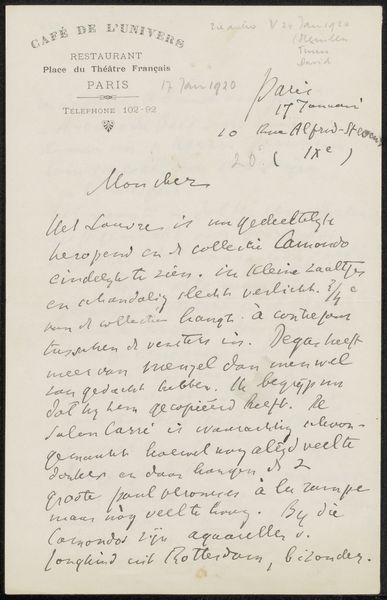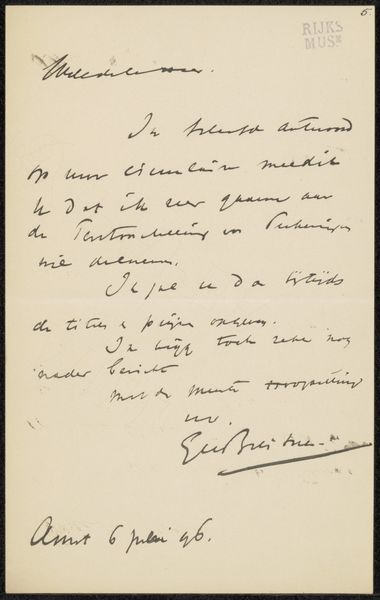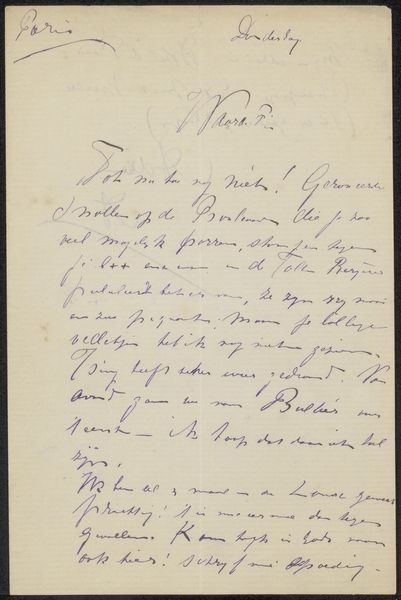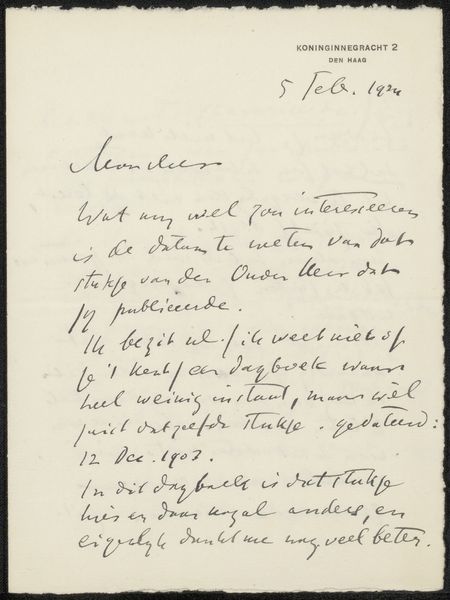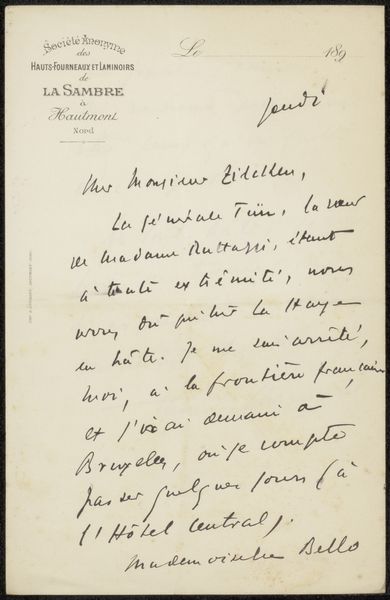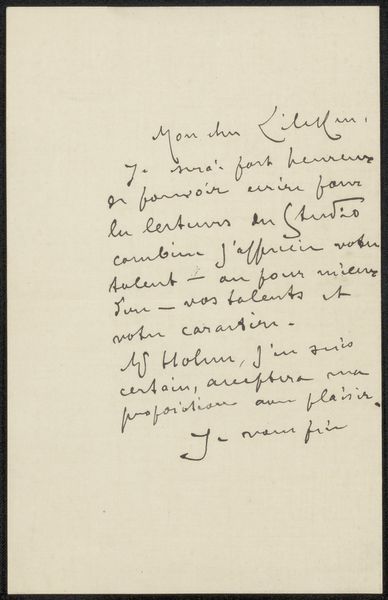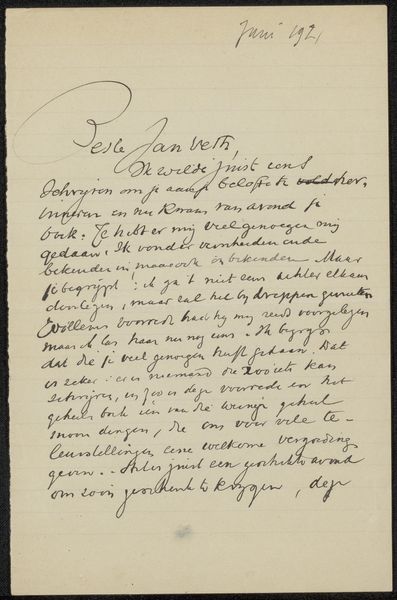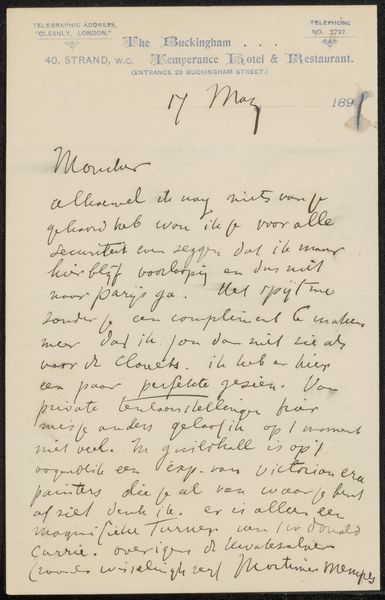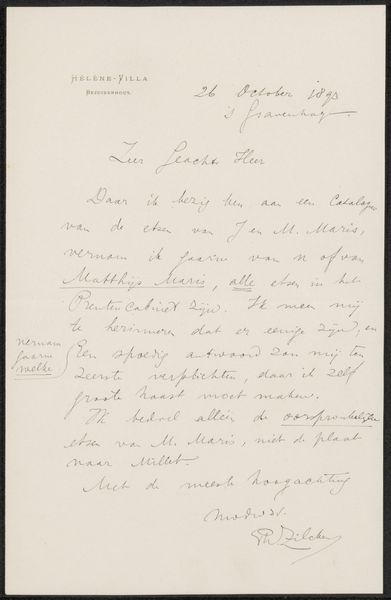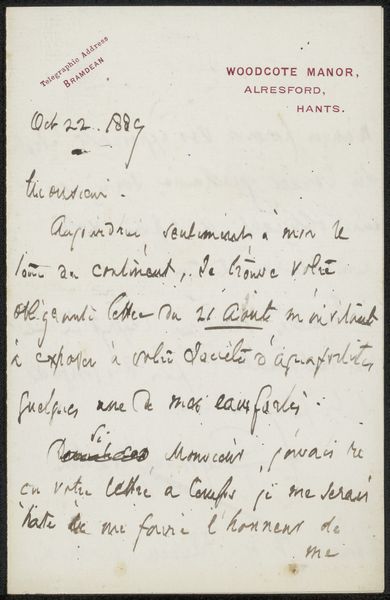
drawing, paper, ink
#
drawing
#
paper
#
ink
#
calligraphy
Copyright: Rijks Museum: Open Domain
Curator: Isaac Israels’ "Brief aan Anna Dorothea Dirks," believed to be from after 1925 and held in the Rijksmuseum collection. It’s rendered in ink on paper, showcasing Israels' hand. My first thought, looking at this document, is of intimacy—a private communication captured on a page. The looping script evokes a specific time. Editor: Intimacy is palpable, I agree. It’s the materiality itself, ink bleeding into the fibrous paper, creating this direct conduit to the artist's thought, revealing vulnerability. Let's consider that handwriting: the very tool reflects status. What labor does the practice of inscription denote in the period this belongs? Curator: A fair point, considering the transition from laborious, stylized script to something more efficient yet retaining that formal grace. This example really foregrounds calligraphy as a conscious aesthetic choice rather than merely a means of transcription, a beautiful and intimate form, a sort of ephemeral sculpture etched with words. Its scale also affects that perception; being a single sheet emphasizes the communication's contained nature. Editor: Exactly! Consider the ink itself - what pigment was used and what binding medium stabilized the fine particles on this paper support? Each decision contributes to our modern reading of “calligraphy." A tool can transform with use into “art" from utilitarian function; an object that prompts discourse centered around value judgments associated directly with human labor. Curator: Agreed. Looking closely, you notice the smudging, little imperfections that wouldn't necessarily make their way into a print publication of a literary text. And perhaps these details serve a further purpose: reminding the recipient, Dirks, that it is handcrafted, personal. Editor: Handcrafted is indeed the key observation when interrogating art historically. The choice of high-quality paper, a writing implement carefully chosen for fluid, elegant marks: All reveal choices, revealing the complex network of craft and cultural priorities involved. These observations bring a tangible quality. I've found I’m almost feeling as if I, too, am addressed by it personally. Curator: A fine note to conclude with; it allows us to look beyond the surface—an important aspect of studying Israels' composition in this work.
Comments
No comments
Be the first to comment and join the conversation on the ultimate creative platform.
